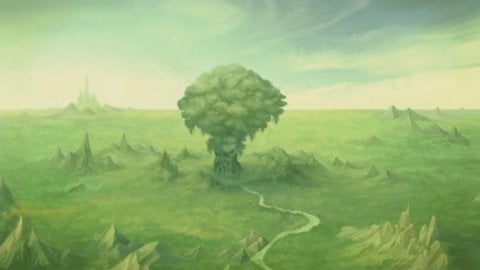Legend of Mana, preview: the return of a classic from the PlayStation era

Legend of Mana, preview
We live in very strange times. Until a year ago, Seiken Densetsu 3 was a title that nobody knew, since at the time of the first release for SNES it had never been officially localized. Within a few months, a nice remake, Trials of Mana, and the much-desired localization of the original in the Collection of Mana has arrived. And suddenly Mana has returned to being a moderately relevant series, to the point of convincing Square Enix to hand over to another Seiken Densetsu, the fourth, released for PlayStation in the now distant 1999 and brought only to the United States and never to Europe. The remastered version of Legend of Mana will arrive on Nintendo Switch, PlayStation 4 and Windows PC next June, and for many players it will be a golden opportunity to recover a little gem in the field of action JRPG.A great little 2D
Legend of Mana is, in fact, the child of some kind of dream team. The production was directed by Koichi Ishii, the creator of the series, while the role of producer was entrusted to Akitoshi Kawazu, who had already directed and produced various SaGa for Square Enix. The team also included Akihiko Matsui, who had conducted Chrono Trigger, and Yoko Shimomura, a composer with no need for an introduction. Perhaps it was precisely the succession of such different perspectives that made Legend of Mana an even too peculiar title, in tune with the past of the series: those who expected a traditional and linear adventure were quite burned, and indeed Seiken Densetsu IV, despite having sold very well at launch, it was received coldly because of the distance it took from previous titles. Who knows ... maybe today, in this market that continually seeks diversification and originality, it could go differently.A scene from Legend of Mana. On one thing, however, they all agreed: in 1999 that graphics were sublime. Determined to materialize the softness of the fantasy world he envisioned, Ishii focused on 2D graphics rather than 3D that couldn't do him justice. The result is beautifully animated sprites, scenarios that look like hand-painted, in a combination that appealed so much to critics and audiences that Square was also convinced to use it in another title of the same year: SaGa Frontier 2, which we will probably see again soon. The game therefore maintains the visual setting of the previous Seiken Densetsu, namely the top-down perspective that allows players to move freely in the eight directions, within the boundaries of the scenario represented on the screen. We speak in the plural, because in the PlayStation version a second player could take control of the battlemate of the silent protagonist. We do not know if the new remastered edition will allow local multiplayer, but if not, you can always entrust the wingmen to artificial intelligence.
A scene from Legend of Mana. The real-time combat system focuses on the use of a large variety of weapons, which can be found or manufactured and upgraded, and on the association of a series of special techniques to the various keys of the controller: once the appropriate indicator by beating enemies, just press the right key combination to unleash a devastating special attack, often associated with different natural elements. Obviously there are also spells and consumables, and in this sense Legend of Mana does not differ particularly from previous titles, such as Trials of Mana: the common enemies alternate with gigantic bosses to be defeated to complete the main and secondary missions. It is at this point, however, that Legend of Mana takes a very particular drift, because we create the world we need to explore by placing the Artifacts found on a sort of grid: each opens a new scenario in which the value of natural elements influences on the power of our enemies and our abilities.
A battle scene from Legend of Mana. For those who love to experiment, Legend of Mana is a very rich title, but it must be admitted that this Land Make system is not exactly intuitive and a bit of tests and counter-tests must be done to understand it better. At the same time, this means that the Square Enix title guarantees excellent longevity, thanks also to a bizarre progression system. In addition to the side missions, which are numerous and often random, there is a plot that develops through three main storylines. They form a larger drawing, but it is not necessary to complete all three to start the final chapter of the game, only one. The player can therefore decide which storyline to follow, determining not only the supporting actors who will support him, but also the ending of the adventure. The story, in fact, revolves all around the efforts of the player who, playing a depersonalized protagonist, must reconstruct the world of Fa'Diel in a sort of reinterpretation of The Neverending Story in JRPG sauce.
The clash with a Legend of Mana boss. Legend of Mana is a necessary reinterpretation: it may not be the best title in the Square series, but it is one of the most original and long-lived, not to mention the beautiful two-dimensional creation that still remains a feast for the eyes today. . However, it remains an unconventional title that could confuse players who have approached this series with the most recent remakes and conversions ... but this is not necessarily a bad thing, right?